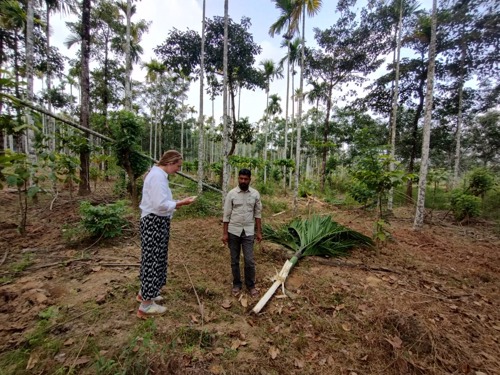
Protecting giants: working towards human-elephant coexistence across Asia
Our experts are developing new ways to help save elephants and people by predicting the future with science!
“Elephants have a way of touching the soul in a way that very few animals can."
Anthony Douglas Williams
The Asian elephant is more than just a symbol of the wild; it’s a natural wonder and a cultural icon across Asia. These gentle giants are crucial for healthy ecosystems, spreading seeds, creating habitats, and forming water holes used by other wildlife. They support biodiversity and benefit local communities both economically and environmentally.

However, despite their gentle nature, elephants can sometimes cause trouble. And while the species faces several challenges across Asia, the greatest threat to their survival comes from conflicts with us.
In India alone, home to nearly 60% of the world’s wild Asian elephants, over 500 human lives and about 450 elephants are lost annually due to these conflicts.
These conflicts arise as elephants often wander into human settlements, where they regularly eat and destroy crops, damage buildings, and can even cause injury or death. Understandably, these negative interactions can lead to retaliatory actions by local communities, sadly resulting in the deaths of many elephants.
To make matters worse, as human populations grow, we encroach on the lands that elephants call home, resulting in the degradation and fragmentation of their habitats that makes the issue worse by bringing elephants and people into closer contact more frequently.
Our Mission: A New Approach to Conflict Resolution
For years, efforts to mitigate these conflicts have been ongoing, with some local successes. However, many measures are short-term fixes and don’t address the root causes, leading to frustration among local communities and worsening the conflict.
New research, led by our Conservation Fellow Jacqui Morrison, aims to change that. Jacqui and the team are developing an innovative new system to assess and predict geographic areas that are most at risk of human-elephant conflicts. By identifying these high-risk areas, interventions can then be prioritized more effectively, providing long-term solutions that promote coexistence between humans and elephants.
To achieve this, the research team are doing something novel: they’re not just predicting regions at risk of encountering elephants, but also whether these incidents are likely to be positive or negative.
 Pictured here, Jacqui is visiting the site of an elephant crop-raiding incident in Kerala, India, with one of our project partners. Jacqui said: “Human-elephant conflicts continue to be a major concern — and not just for the conservation of elephants but also the wellbeing of people living alongside them. It’s a privilege to be part of an interdisciplinary team that is the first to incorporate all aspects from the outset of risk prediction, including elephant ecology and, most importantly, the perceptions of local communities, which are often overlooked. Integrating information from the natural sciences and knowledge from experts, along with communities’ levels of tolerance towards elephants, our predictions aim to facilitate effective human-elephant conflict management and promote long-term coexistence.
Pictured here, Jacqui is visiting the site of an elephant crop-raiding incident in Kerala, India, with one of our project partners. Jacqui said: “Human-elephant conflicts continue to be a major concern — and not just for the conservation of elephants but also the wellbeing of people living alongside them. It’s a privilege to be part of an interdisciplinary team that is the first to incorporate all aspects from the outset of risk prediction, including elephant ecology and, most importantly, the perceptions of local communities, which are often overlooked. Integrating information from the natural sciences and knowledge from experts, along with communities’ levels of tolerance towards elephants, our predictions aim to facilitate effective human-elephant conflict management and promote long-term coexistence.